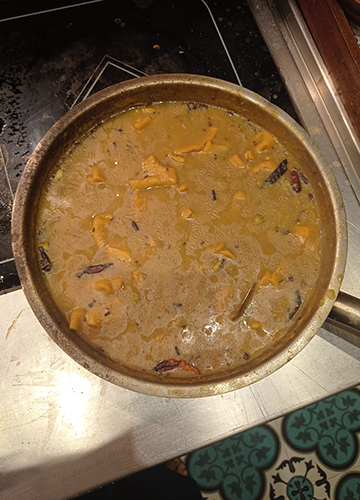Wedding feasts and banquets bring out the nativist in my mother. “We are Sheherwali Jains! No one makes vegetarian food with as much style as we do,” I have often heard her say without batting an eyelid. I have tried to explain matters of great historical importance that she might as well boast about. Like how one of the more famous Sheherwali Jains, Manick Chand, was a renowned traitor who colluded with Robert Clive to bankroll the Battle of Plassey and defeat the Nawab of Bengal in 1757. That colonialism would not have existed in India without this victory. My mother does not care. But yes, like a true Sheherwali—itinerant traders who moved from Rajasthan in the 18th century to the cosmopolitan Murshidabad (the capital of undivided Bengal)—she cannot stand sloppily cut mangoes.
So when The Connaught in Delhi, a property of IHCL SeleQtions, invited me to prepare a dish based on a family recipe as part of their Memories On A Plate project, who was I to refuse flexing my Sheherwali culinary heritage? Called Dal Pitthi, a deceptively simple concoction I have been trying to perfect for years, it can also be called the Indian Thukpa or minestrone soup—with finely cut-and-folded flour strips floating in a tangy river of lentil broth. A tight bun of atta is kneaded with cumin seeds, chilli powder, salt, turmeric, asafoetida and ghee. The pigeon peas are then roasted in ghee for the broth. The strips of atta are lightly dunked in a simmering pot of dal. Then it is tempered with dried chili, bay leaves, salt, cardamom, cloves, mustard, cumin seeds, and just a hint of sugar.
When I am wintering away from home, this feels like the warmest, tightest hug. The fine folks at The Connaught prepare a log-book of such recipes every weekend, signed by the enthusiasts who heartily share a slice of their personal history. They say some of them might even make it to the menu of the Taj eventually.


